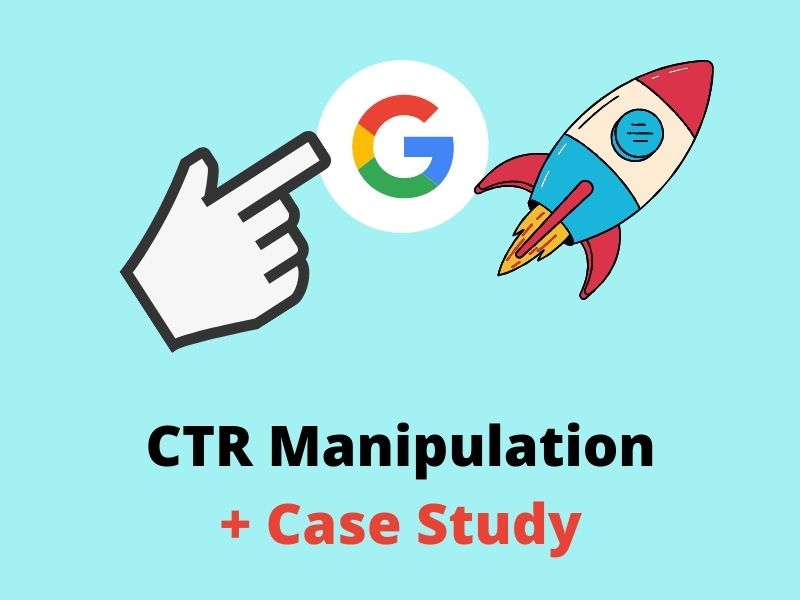CTR Control: A Game Changer for Digital Campaigns
The increase of CTR manipulation has undeniably transformed digital advertising techniques, offering marketing professionals with devices to boost involvement and drive web traffic successfully. Methods such as A/B testing and customized material have shown to yield significant renovations in click-through prices. Nevertheless, as brands increasingly utilize these approaches, the honest ramifications of such techniques call for examination. Stabilizing the pursuit of maximized metrics with the demand for genuine audience links presents a vital challenge for marketing experts today. What ramifications might this balancing act hold for the future of electronic campaigns?
Understanding CTR Control
Although click-through price (CTR) control might feel like a simple strategy in digital advertising, it encompasses a variety of approaches aimed at synthetically blowing up engagement metrics. This control can take numerous forms, including making use of click ranches, bots, or deceptive advertisement positionings that deceive consumers right into clicking. These strategies can compromise the stability of efficiency information, making it testing for online marketers to assess the real performance of their campaigns.
Furthermore, CTR control increases moral problems, as it undermines the transparency of digital advertising. The reliance on inflated metrics can cause misdirected advertising choices, skewing source appropriation and project approaches. Businesses may invest heavily in channels and tactics that appear effective yet do not generate genuine interaction or conversions.

Advantages of Click-Through Rate Optimization
Optimizing click-through price (CTR) is necessary for improving the performance of electronic advertising and marketing campaigns. A higher CTR shows that a larger proportion of customers are engaging with the content, which can cause boosted website web traffic and much better conversion rates. By boosting CTR, brands can effectively allot their advertising resources to campaigns that generate the highest possible returns.
Among the primary advantages of CTR optimization is the potential for boosted ad positioning and lower prices - CTR Manipulation. Platforms like Google Advertisements award greater CTRs with much better advertisement positioning and minimized cost-per-click (CPC), allowing marketers to extend their budgets better. Furthermore, a well-optimized CTR can boost brand presence, as higher involvement rates commonly correlate with raised organic reach

Methods for Effective CTR Adjustment
To efficiently adjust click-through prices (CTR), online marketers can use a range of strategic methods that boost customer interaction and drive website traffic. One fundamental strategy is enhancing advertisement duplicate to create engaging and action-oriented language. CTR Manipulation. Utilizing strong call-to-action (CTA) phrases motivates individuals to take immediate action, increasing the likelihood of clicks
One more reliable technique is A/B testing, which enables marketing professionals to contrast various advertisement variants. By systematically evaluating performance metrics, they can identify which elements resonate ideal with the target market, thereby refining their strategies for maximum impact. In addition, leveraging aesthetically enticing graphics and succinct messaging can catch interest quickly, making it a lot more likely that individuals will engage.

Lastly, optimizing touchdown web pages to make sure a seamless user experience can reduce bounce prices and urge additional interaction, ultimately fostering higher CTR. By incorporating these techniques, online marketers can effectively adjust CTR to accomplish their campaign objectives.
Gauging Success in Digital Campaigns
Measuring success in electronic projects requires a clear understanding of vital efficiency indicators (KPIs) that straighten with project objectives. KPIs function as measurable metrics that assist analyze the efficiency of various approaches utilized throughout the campaign. Typical KPIs include click-through prices (CTR), conversion rates, price per purchase (CERTIFIED PUBLIC ACCOUNTANT), and roi (ROI)
To successfully measure success, it is critical to establish details, measurable goals initially of the campaign. As an example, if the primary purpose is to enhance brand name recognition, metrics such as impressions and involvement rates might be focused on. In comparison, projects focused on direct sales would certainly profit from an extra comprehensive evaluation of conversion rates and profits created.
Regular evaluation of these KPIs makes it possible for marketing experts to make data-driven decisions, enhancing their techniques in real-time. Utilizing analytical devices can assist in tracking performance and determining patterns, permitting for swift modifications to boost project outcomes. Eventually, a detailed approach to measuring success not only highlights areas for renovation yet also reinforces the overall efficiency of electronic advertising and marketing efforts, driving sustained growth and interaction in the long term.
Future Patterns in Digital Advertising
Preparing for the future of electronic advertising and marketing discloses a landscape shaped by rapid technological developments and altering next page customer habits. As fabricated knowledge and equipment learning continue to develop, marketing experts will increasingly leverage these technologies to personalize projects at an extraordinary scale. Predictive analytics will enable brand names to prepare for client requirements, enhancing ad placements and material distribution in real time.
Additionally, the rise of voice search and smart devices is changing exactly how consumers interact with electronic web content. Marketing experts will certainly need to adapt their approaches to ensure presence throughout several platforms, consisting of voice-activated assistants. This change requires a focus on conversational advertising and marketing, highlighting engagement through discussion instead of typical marketing tactics.
In addition, personal privacy issues are motivating adjustments in data collection techniques. Transparency and moral data usage will certainly become extremely important, driving brands to cultivate depend on and loyalty among customers. The recurring development of social media systems will additionally affect advertising and marketing techniques, with an increased emphasis on credibility and user-generated material.
Verdict
In summary, CTR control stands for a considerable development in digital advertising methods, supplying immediate advantages through enhanced involvement metrics. The continuous evolution of electronic marketing will depend on this fragile interplay, forming the future landscape of brand-consumer interactions.